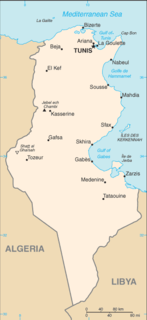 W
WThe 1987 Tunisian coup d'état involved the bloodless ousting of the aging President of Tunisia Habib Bourguiba on 7 November 1987, and his replacement as President by his recently appointed Prime Minister, Zine El Abidine Ben Ali. The action was justified by reference to Bourguiba's failing health and Article 57 of the country's constitution. Reports later surfaced to indicate that the Italian intelligence services had been involved in planning it.
 W
WThe Anfal genocide was a genocide that killed between 50,000 and 182,000 Kurds as well as several thousand Assyrians. It was committed during the Al-Anfal campaign led by Ali Hassan al-Majid, on the orders of President Saddam Hussein, against Iraqi Kurdistan in northern Iraq during the final stages of the Iran–Iraq War.
 W
WAouzou is a small town and oasis in the extreme north of Chad, situated within the Aouzou Strip. It was the site of the Battle of Aouzou, during which Chadian forces captured the town from Libya in August 1987, followed by its recapture by Libya less than a month later. The town was formally transferred to Chadian control in 1994, along with the entirety of the Aouzou Strip.
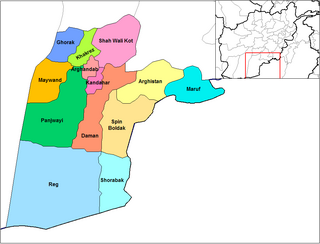 W
WThe Battle of Arghandab was an offensive launched by Afghan government forces, supported by Soviet troops against Mujahideen strongholds in the Arghandab District of Kandahar Province, Afghanistan. The operation ended in failure, and the government forces withdrew after suffering heavy losses.
 W
WThe Battle of Maaten al-Sarra was a battle fought between Chad and Libya on September 5, 1987, during the Toyota War. The battle took the form of a surprise Chadian raid against the Libyan Maaten al-Sarra Air Base, meant to remove the threat of Libyan airpower, that had already thwarted the Chadian attack on the Aouzou Strip in August. The first clash ever held in Libyan territory since the beginning of the Chadian–Libyan conflict, the attack was fully successful, causing a high number of Libyan casualties and low Chadian casualties, also contributing to the definitive ceasefire signed on September 11 among the warring countries.
 W
WThe Rebellion of Brașov was a revolt against Nicolae Ceaușescu's economic policies in Communist Romania, which erupted on the day of the 1987 local election.
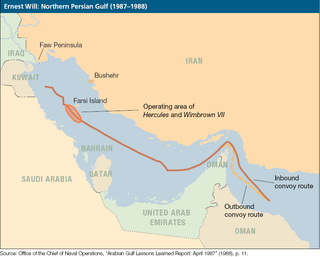 W
WThe Bridgeton incident was the mining of the supertanker SS Bridgeton near Farsi Island in the Persian Gulf on July 24, 1987. The ship was sailing in the first convoy of Operation Earnest Will, the U.S. response to Kuwaiti requests to protect its tankers from attack amid the Iran–Iraq War. The explosion of an Iranian mine in the Gulf's shipping channel damaged Bridgeton's outer hull but did not prevent it from completing its voyage.
 W
WThe 1987 Burkinabé coup d'état was a bloody military coup in Burkina Faso, which took place on 15 October 1987. The coup was organized by Captain Blaise Compaoré against incumbent far-left President Captain Thomas Sankara, his former friend and associate during the 1983 upheaval.
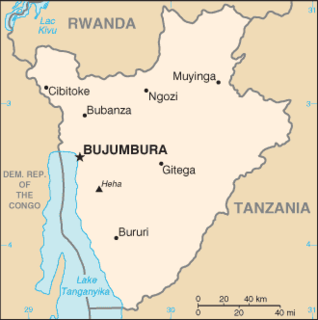 W
WThe 1987 Burundian coup d'état was a bloodless military coup that took place in Burundi on 3 September 1987. Tutsi president Jean-Baptiste Bagaza was deposed whilst traveling abroad and succeeded by Tutsi Major Pierre Buyoya.
 W
WThe Cambodian–Vietnamese War, known in Vietnam as the Counter-offensive on the Southwestern border, and by Cambodian nationalists as the Vietnamese invasion of Cambodia, was an armed conflict between Democratic Kampuchea, controlled by the Khmer Rouge, and the Socialist Republic of Vietnam. The war began with repeated attacks by the Kampuchean Revolutionary Army on the southwestern border of Vietnam, particularly the Ba Chuc massacre which resulted in the deaths of over 3,000 Vietnamese civilians. On 25 December 1978, Vietnam launched a full-scale invasion of Kampuchea, and subsequently occupied the country and removed the government of the Communist Party of Kampuchea from power.
 W
WThe Communist insurgency in Malaysia, also known as the Second Malayan Emergency, was an armed conflict which occurred in Malaysia from 1968 to 1989, between the Malayan Communist Party (MCP) and Malaysian federal security forces.
 W
WThe Communist insurgency in Sarawak occurred in Malaysia from 1962 to 1990, and involved the North Kalimantan Communist Party and the Malaysian Government. It was one of the two Communist insurgencies to challenge the former British colony of Malaysia during the Cold War. As with the earlier Malayan Emergency (1948–1960), the Sarawak Communist insurgents were predominantly ethnic Chinese, who opposed to British rule over Sarawak and later opposed the merger of the state into the newly created Federation of Malaysia. The insurgency was triggered by the 1962 Brunei Revolt, which had been instigated by the left-wing Brunei People's Party in opposition to the proposed formation of Malaysia.
 W
WThe Battle of Cuito Cuanavale was fought intermittently between 14 August 1987 and 23 March 1988, south and east of the town of Cuito Cuanavale, Angola, by the People's Armed Forces for the Liberation of Angola, Cuba, South Africa, and insurgents of the National Union for the Total Independence of Angola (UNITA) during the Angolan Civil War and South African Border War. The battle was the largest engagement of the Angolan conflict and the biggest conventional battle on the African continent since World War II. UNITA and its South African allies defeated a major FAPLA offensive towards Mavinga, preserving the former's control of southern Angola. They proceeded to launch a bloody but inconclusive counteroffensive on FAPLA defensive positions around the Tumpo River east of Cuito Cuanavale.
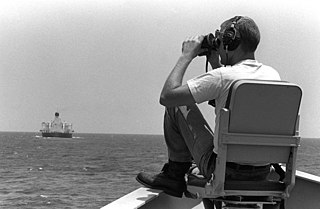 W
WOperation Earnest Will was the American military protection of Kuwaiti-owned tankers from Iranian attacks in 1987 and 1988, three years into the Tanker War phase of the Iran–Iraq War. It was the largest naval convoy operation since World War II.
 W
WThe battle of Fada took place in northern Chad in 1987, and was a turning point of the Chadian–Libyan conflict.
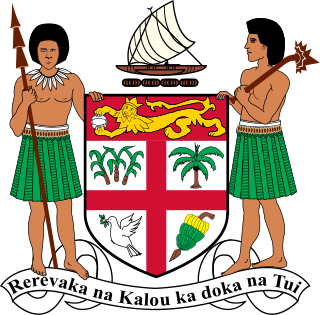 W
WThe Fijian coups of 1987 resulted in the overthrow of the elected government of Fijian Prime Minister Timoci Bavadra, the deposition of Elizabeth II as Queen of Fiji, and in the declaration of a republic. The first coup, in which Bavadra was deposed, took place on 14 May 1987; a second coup on 28 September ended the monarchy, and was shortly followed by the proclamation of a republic on 7 October. Both military actions were led by Lieutenant Colonel Sitiveni Rabuka, then third in command of the Royal Fiji Military Forces. Depending on perspective, one may view the event either as two successive coups d'état separated by a four-month intermission, or as a single coup begun on 14 May and completed with the declaration of the republic.
 W
WOperation Firewood was a secretive military operation in 1987 by the South African Defence Force (SADF) during the South African Border War.
 W
WThe March 1987 Turkish incursion into northern Iraq, by the Turkish Air Force, began on 4 March 1987, when the Turkish Military bombed Kurdistan Workers' Party (PKK) targets in Northern Iraq. 30 war planes were used in the operation and 3 major PKK camps was bombed.
 W
WOperation Moduler was a military operation by the South African Defence Force (SADF) during the South African Border War. It formed part of what has come to be called the Battle of Cuito Cuanavale. The Angolan objective was to advance south-east to attack the UNITA at Mavinga. The SADF objective was to protect UNITA by stopping that advance. The advance was halted with heavy Angolan casualties. The South African forces and its UNITA allies then began offensive operations against the Angolan forces, who had retreated back to a defensive line east of the Cuito River with the objective of destroying them once and for all.
 W
WNight of the Gliders refers to an incident that took place on 25 November 1987, in which two Palestinian guerrillas infiltrated into Israel from South Lebanon using hang gliders to launch a surprise attack against the Israel Defense Forces (IDF). While one was tracked down and killed by Israeli security forces before he could carry out an attack, another one managed to infiltrate an IDF base, killing six Israeli soldiers and wounding eight others before being shot dead.
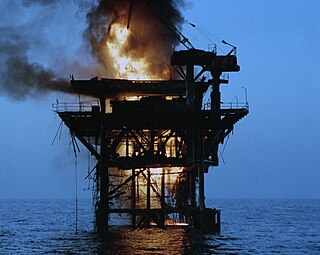 W
WOperation Nimble Archer was the 19 October 1987 attack on two Iranian oil platforms in the Persian Gulf by United States Navy forces. The attack was a response to Iran's missile attack three days earlier on MV Sea Isle City, a reflagged Kuwaiti oil tanker at anchor off Kuwait. The action occurred during Operation Earnest Will, the effort to protect Kuwaiti shipping amid the Iran–Iraq War.
 W
WOperation Rajiv was a successful Indian Army operation to capture the highest peak on the Actual Ground Position Line (AGPL) in the Siachen area in 1987. The peak, which was earlier named as Quaid Post by Pakistan, was renamed as Bana Top by India after the victory. India presently continues to hold this post which lies to the south of strategic Bilafond La also held by India.. India also has Amar and Sonam posts in this sector on the slopes at lower heights.
 W
WOperation Prime Chance was a United States Special Operations Command operation intended to protect U.S.-flagged oil tankers from Iranian attack during the Iran–Iraq War. The operation took place roughly at the same time as Operation Earnest Will, the largely naval effort to escort the tankers through the Persian Gulf. The operation was begun after the mining of the U.S.-flagged Kuwaiti oil tanker Bridgeton.
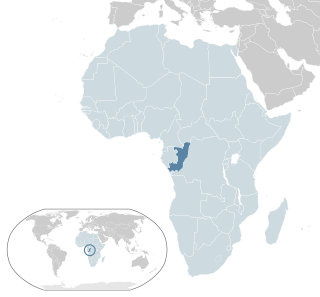 W
WFrom July to September 1987 forces loyal to Denis Sassou Nguesso defeated Kouyous forces which attempted to overthrow his regime. Pierre Anga, one of the coup leaders, fled to Owando where he was killed on September 6, 1987 ending the coup.
 W
WIn 1986–87, a military standoff took place between India and China in the Sumdorong Chu Valley bordering the Tawang district, Arunachal Pradesh and Cona County, Tibet. It was initiated by China moving a company of troops to Wangdung, a pasture to the south of Sumdorong Chu that India believed to be its territory. The Indian troops stood their ground on the neighbouring Longro La ridge and both the sides moved a large number of troops to the border. The crisis was diffused after the visit of Indian External Affairs minister to Beijing in May 1987. The standoff was the first military confrontation along the disputed McMahon Line after the 1962 war and gave rise to fears of escalation. Subsequently, India and China formulated agreements for managing future border tensions.
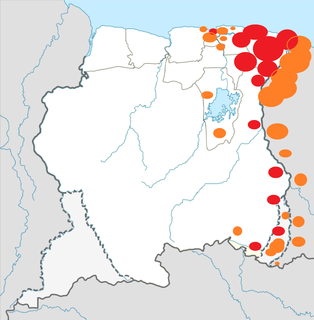 W
WThe Surinamese Interior War was a civil war waged in the remote interior region of Suriname between 1986 and 1992. The war was fought between the Tucayana Amazonas led by Thomas Sabajo and the Jungle Commando led by Ronnie Brunswijk, whose members originated from the Maroon ethnic group, against the National Army led by then-army chief and de facto head of state Dési Bouterse.
 W
WThe Thai–Laotian Border War was a short confrontation between Thai and Laotian forces. It involved a dispute over the map made by French surveyors in 1907 to mark the borders between Siam and French Indochina in the southern Luang Prabang Range. Ownership of the village of Ban Romklao on the border of Phitsanulok Province and three small border villages on the edge of Uttaradit Province was left unclear. This is the same map underlying the Cambodian–Thai border dispute. The agreed criterion for determining ownership was the natural watershed, but the French map makers at times ignored this.
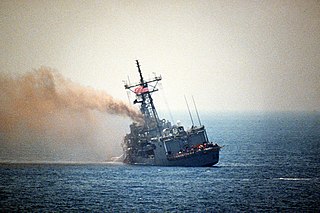 W
WThe USS Stark incident occurred during the Iran–Iraq War on 17 May 1987, when an Iraqi jet aircraft fired two Exocet missiles at the American frigate USS Stark. A total of thirty-seven United States Navy personnel were killed or later died as a result of the attack, and twenty-one were injured.